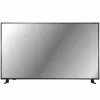An RCA jack, also referred to as a phono connector or CINCH/AV connector, is a type of electrical connector that is commonly used in the audio/video market. The name "RCA" derives from the Radio Corporation of America, which introduced the design by the early 1940s to allow phonograph players to be connected to amplifiers.
For many other applications it began to replace the older jack plugs used in the audio world when component high fidelity started becoming popular in the 1950s.
The corresponding plug is called an RCA plug or a phono plug, as opposed to a phone plug which refers to a TRS connector.
In the most normal usage, cables have a standard plug on each end, consisting of a central male connector, surrounded by a ring. The ring is often segmented for flexibility. Devices mount the jack, consisting of a central hole with a ring of metal around it. The ring is slightly smaller in diameter and longer than the ring on the plug, allowing the plug's ring to fit tightly over it. The jack has a small area between the outer and inner rings which is filled with an insulator, typically plastic (very early versions, or those made for use as RF connectors used ceramic).
As with many other connectors, the RCA has been adopted for other uses than originally intended, including as a power connector, an RF connector, and as a connector for loudspeaker cables. Its use as a connector for composite video signals is extremely common, but provides poor impedance matching. RCA connectors and cable are also commonly used to carry SPDIF-formatted digital audio, with plugs colored orange to differentiate them from other typical connections.
Connections are made by pushing the cable's plug into the jack on the device. The signal-carrying pin protrudes from the plug, and often comes into contact with the socket before the grounded rings meet, resulting in loud hum or buzz if the audio components are powered while making connections. Continuous noise can occur if the plug partially falls out of the jack, breaking ground connection but not the signal. Some variants of the plug, especially cheaper versions, also give very poor grip and contact between the ground sheaths due to their lack of flexibility.
They are often color coded, yellow for composite video, red for the right channel and white or black for the left channel of stereo audio. This trio (or pair) of jacks can be found on the back of almost all audio and video equipment. At least one set is usually found on the front panel of modern TV sets, to facilitate connection of camcorders, digital cameras, and video gaming consoles. Although nearly all audio-visual connectors, including audio, composite and component video, and S/PDIF audio can use identical 75 Ω cables, sales of special-purpose cables for each use have proliferated. Varying cable quality means that a cheap line-level audio cable might not successfully transfer component video or digital audio signals.











